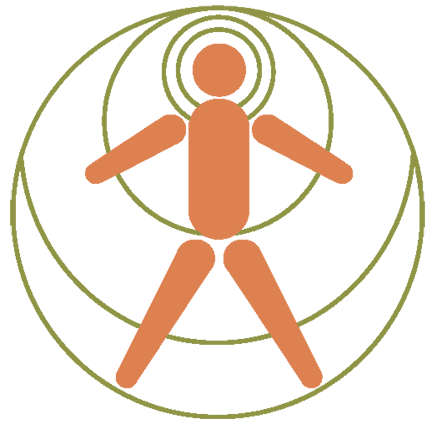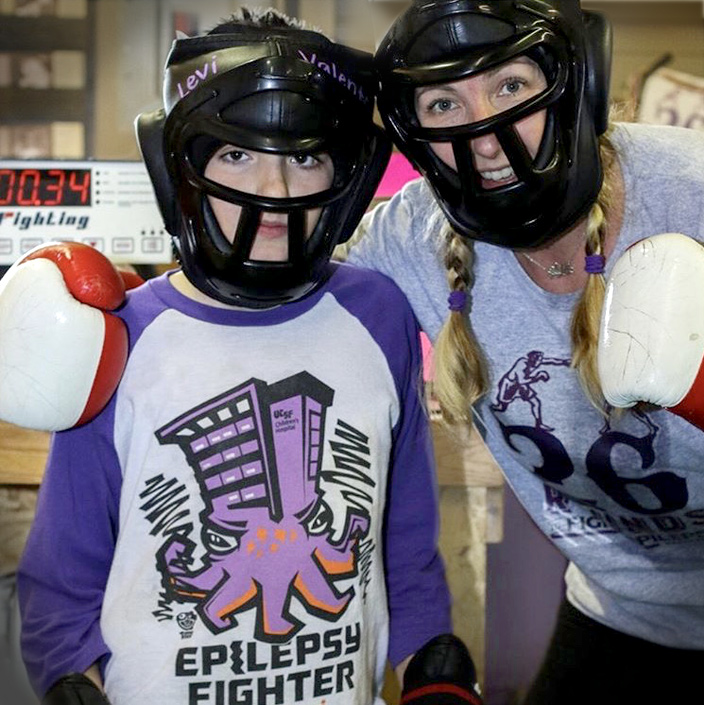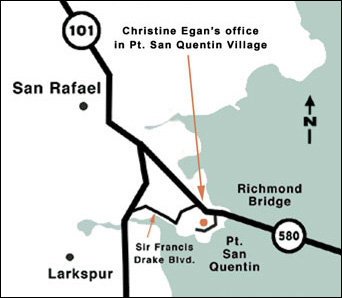Christine Egan Physical Therapy
Christine’s Pediatric Physical Therapy Blog
The Valentine Family: Rolling with the Punches
Karen Valentine was ecstatic. The year was 2013, and she was returning with her family from a dream vacation in Kauai, Hawaii. The beachside house, sunbathing and pina coladas had diffused the monumental stress of the past six years. Karen’s evening flight from Hawaii landed without incident, she drove the family back to their quiet Marin home, tucked her son, Levi Valentine — six years old at the time — into bed, and retired for the night.
Then it happened.
A few hours into the night, Karen and her husband, Mike Valentine, awoke to a convulsing and flailing Levi. His eyes rolled back in their sockets. His body was twitching violently. Karen called an ambulance, and rode with Levi to the hospital, her vacation serenity shattered. Until this point, Levi had appeared to have turned a corner and his medication schedule was nearly complete. But that night, he suffered his longest incident to date — a full 20 minute tonic-clonic seizure. For Karen, it meant the guard that she had finally let down in Hawaii must be erected again: Levi’s epilepsy had reared its ugly head once more.
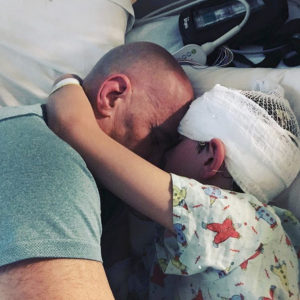 Levi has DOOSE Syndrome, a rare form of epilepsy characterized by sporadic seizures of varying severity. Since his first “jerk” seizure at age 2, Levi has endured a plethora of epileptic episodes throughout his life — including a volatile status epilepticus during which he did not return to normal conciseness for 10 days. Karen and Mike have ridden the rollercoaster of emotions — celebrating Levi’s milestones but always, as she puts it, “waiting for the next shoe to drop.”
Levi has DOOSE Syndrome, a rare form of epilepsy characterized by sporadic seizures of varying severity. Since his first “jerk” seizure at age 2, Levi has endured a plethora of epileptic episodes throughout his life — including a volatile status epilepticus during which he did not return to normal conciseness for 10 days. Karen and Mike have ridden the rollercoaster of emotions — celebrating Levi’s milestones but always, as she puts it, “waiting for the next shoe to drop.”
“It would look like someone stuck a cattle prod in his chest,” Karen said of Levi’s first jerk seizures. “His whole body would go backward with his arms and legs out and he would just slam into his toys and cry. It was really scary to watch. It was like he was possessed — which you can see why people used to think that epilepsy was [demonic possession].”
During Levi’s birth, the umbilical cord was wrapped around his neck, cutting off blood flow to his brain. Karen said that doctors frantically cut the cord before she had finished pushing, and spent six minutes resuscitating Levi. “He was just white and limp,” Karen said. Though no one can definitively say what caused Levi’s epilepsy, Karen thinks this lack of oxygen combined with some genetic risk factors (discovered after Levi began having seizures) brought on Levi’s condition.
Levi was still not talking at 18 months old, and had trouble regulating his sensory input. Though pediatricians were opting to wait on Levi’s development, Karen said she could feel something was wrong with her son just based on motherly intuition. She also was wary of the lasting effects from Levi’s tumultuous birth scenario.
“We were concerned because you don’t just not have oxygen for six minutes and move on with your life,” Karen said. “Somewhere along the line that’ll affect you.”
Karen and Mike proactively sought help from the Golden Gate Regional Center in San Francisco, who arranged for speech, occupational and physical therapy. Within a few weeks of turning two, Karen brought Levi to Christine Egan’s MPH, PT C/NDT office for his first session. Karen said it was reassuring to speak with someone who agreed with her intuition that something was wrong with Levi.
“She was validating all the things we had concerns about,” Karen said, “not in an alarmist way but in a way that made us feel heard and made it feel like our kid was being looked out for.”
“When I first meet a family, I look for a connection,” Christine said. “I want to make the concepts of my therapy relatable. This was almost immediate with Karen and her husband, Mike because of their expertise in martial arts. Levi benefited from our collaboration combining PT and martial arts.”
“I continue to value what they do for the community and how inclusive they are in their dojo. I often refer kids with a variety of issues to practice martial arts with them.”
As Karen and Mike observed and participated in Levi’s physical therapy, they became fascinated with the science behind the exercises. Karen and Mike are co-owners of Practical Martial Arts studio in Corte Madera, and many of their young martial arts students also have developmental or physical challenges. Mike saw an opportunity to incorporate the themes of Levi’s physical therapy into their martial arts drills.
“Christine was very open to sharing why she did stuff that she did with Levi,” Karen said.
For example, they saw how Christine emphasized exercises that involved crossing the body’s vertical midline: crossing one’s right arm to touch their left leg, and vice versa. Karen said that many of their drills at the dojo included similar motions, but they had never thought about the developmental benefits their drills could have for children.
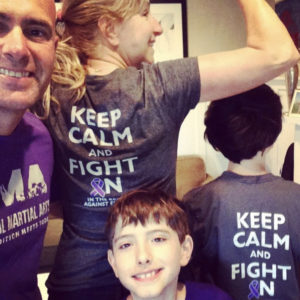 “People take for granted the complex actions that take place in order for a human being to develop — something as ordinary as speech or movement,” Karen said. “We were really able to enrich our program because we learned so much about physical development and how to encourage it.”
“People take for granted the complex actions that take place in order for a human being to develop — something as ordinary as speech or movement,” Karen said. “We were really able to enrich our program because we learned so much about physical development and how to encourage it.”
Karen also initiated the 26 Rounds Fundraiser through the martial arts studio, inspired by Levi’s struggle with epilepsy. Epilepsy affects 1 in every 26 Americans according to the Epilepsy Foundation, so Karen hatched the idea to invite participants to spar for 26 rounds at the studio, in solidarity with epileptics. Though 26 Rounds has raised nearly $44,000 for the Camp Coelho Epilepsy Camp in just three years, Karen said it is nowhere near enough to combat the stigma and discrimination people with epilepsy face from others, even their own family.
“We’re grateful Levi has grown up without that [stigma] and he’s happy to talk about his epilepsy,” Karen said.
“There are many things I have accomplished in my 13 years of life,” Levi said. “My biggest accomplishment however, is learning to deal with my seizures.”
 “1 in 26 people have Epilepsy and that makes me special even though it can be scary sometimes. I think that my Epilepsy makes me a stronger person,” Levi said.
“1 in 26 people have Epilepsy and that makes me special even though it can be scary sometimes. I think that my Epilepsy makes me a stronger person,” Levi said.
Levi may cease having seizures in the future, or he might deal with them the rest of his life. His journey with epilepsy does not have a tidy ending at the moment, but Levi has come to terms with his condition. Karen said he has adjusted well to his first year of middle school, and has handled the pandemic environment exceptionally.
Many difficult situations have no easy resolutions in sight. Karen and Levi demonstrate that heroes may not need resolutions. They simply carry on.
